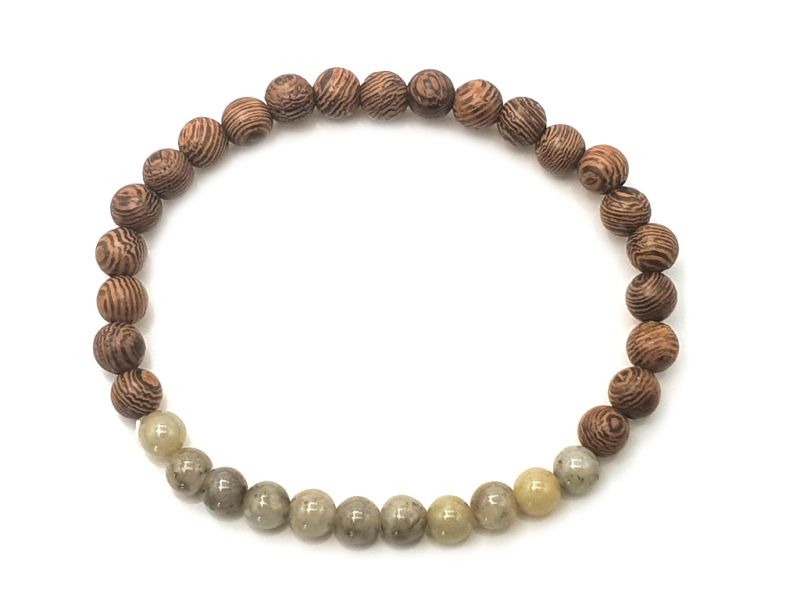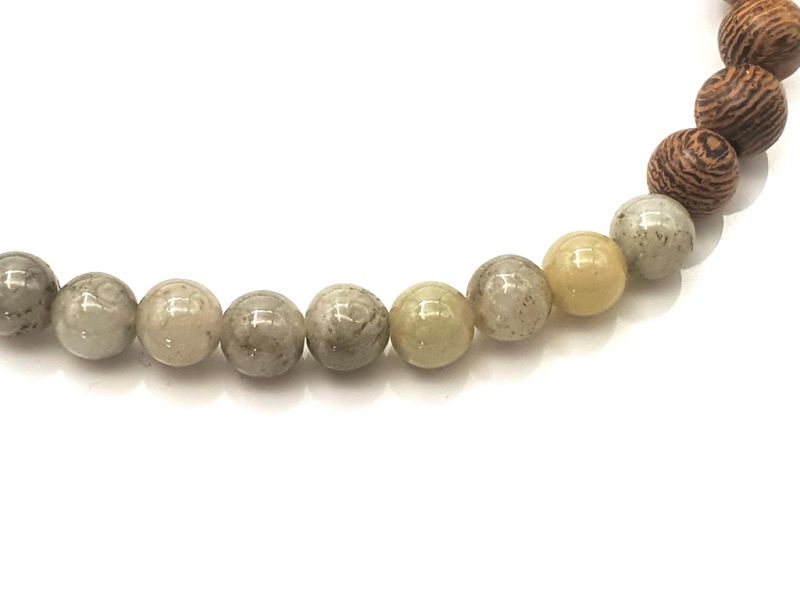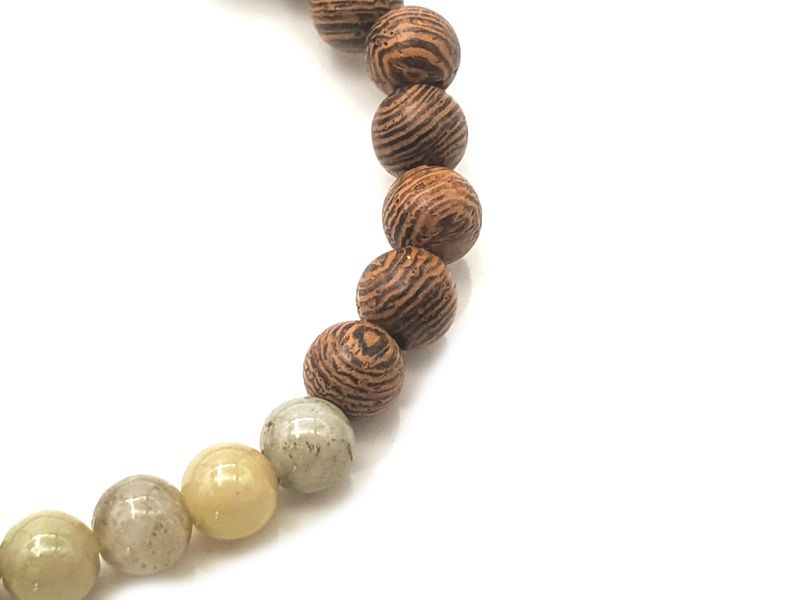Jade and wood Bracelet - 6mm - African rosewood and mottled green jade
Jade and wood bracelet:
- Here we revisit a classic: "The jade bead bracelet". We decided to add wooden beads using noble wood species, which are generally used in the design of our Tibetan mâlâ.
- Our wooden beads are produced in Nepal or China by Tibetan craftsmen.
- Jade bracelet called "jadeite" type A, which means that it is authentic and natural and made of 100% natural untreated wood.
- This bracelet is made up of small beads mounted on an elastic bracelet.
- It has an ethnic and zen appearance that highlights its owner.
Jade:
- Jade, called "Yu" in China, is a family of minerals composed of Jadeite and Nephrite. Jade forms under very high pressure (over 10,000 atmospheres).
* The rarer Jadeite Jade developed during the "Qianlong Emperor" Ching Dynasty. It is a silicate of aluminum and sodium.
* Nephrite Jade is a very common magnesium lime silicate in China.
- Jadeite deposits are found in Burma, Guatemala, Japan, Russia, USA, Brazil, Canada, Kazakhstan, Italy, China and Colombia. The jadeite in this bracelet comes from the border between China and Burma.
- The color of jade varies depending on the amount of chromium oxide and iron oxide it contains. Thus, jade can display the following colors:
* green: there are jade in different shades of this color associated with peace
* blue: associated with energy
* pink: represents harmony
* black: associated with success
* white: it is pure jade which represents perfection
Wood:
- We use several species of wood for our bracelets: Thuya, Burmese rosewood, green sandalwood, golden sandalwood, imperial wood, ebony, rosewood etc...
- The smell given off by our Mâlâ is a 100% natural smell coming from the wood in which each pearl is cut.
- Size of each bead: 6mm in diameter.
The virtues of Jade:
- Many healing properties have also been attributed to jade since Antiquity. This stone has been used in the form of ointments, ointments or elixirs to relieve the kidneys, cure colic, help sleep, promote pregnancy, fight against canker sores, fight fever, soothe nervousness, alleviate migraine or relieve cramps.
- The Chinese also believe that jade has certain powers that promote meditation, bring wealth, and gain wisdom.
- This stone is also said to bring balance, beauty and harmony to people who possess it.
History of Jade:
One day, one of Confucius' disciples asked him:
"Master, may I take the liberty of asking you why a good man considers jade the most precious of stones? Is it because jade is rare? »
Confucius replied:
“Jade is valuable not because it is rare, but because the quality of jade matches the virtue of a good man. It corresponds to virtues such as benevolence, wisdom, righteousness, propriety, loyalty and faithfulness and it also corresponds to the principles of the earth and the heavens. Jade is soft and pleasant, just like a gentleman's benevolence..."
A legendary stone in South and Central America, jade has embodied the power and nobility of emperors since Chinese prehistory. Several polished jade objects have indeed been found on prehistoric sites. Objects carved in this stone were brought to Europe by the Portuguese at the beginning of the 16th century and quickly became very popular. They were also compared to Aztec jade objects brought back by the Spanish conquistadors. European jewelers began to make many jade jewels, such as bracelets, necklaces, pendants, rings or earrings. The curative and spiritual virtues of this stone have forged its fame throughout the centuries and all around the world. Moreover, a Chinese saying announces: “We can estimate gold, but jade is priceless”. Jade has several symbols such as the chastity and purity of women, or the absolute power of Chinese emperors.















